Stocks were hit with selling pressure last week as the major index ETFs declined 1.75-2.25 percent. The declines were relatively modest and came the week after most major index ETFs and sector SPDRs hit new highs. This means the long-term trend is still up and any short-term weakness would be viewed as a correction, which makes it dangerous to turn too bearish because the long-term uptrend could pull trump at any time. The indtrday breadth indicators are still bullish overall. The Nasdaq AD Line broke support, but the Nasdaq AD Volume Line held strong. The NYSE AD Line and AD Volume Line are both at their support zones for a short-term test. High-Low Percent fell below 2.5%, but has yet to go negative.
**This chart analysis is for educational purposes only, and should not
be construed as a recommendation to buy, sell or sell-short said securities**
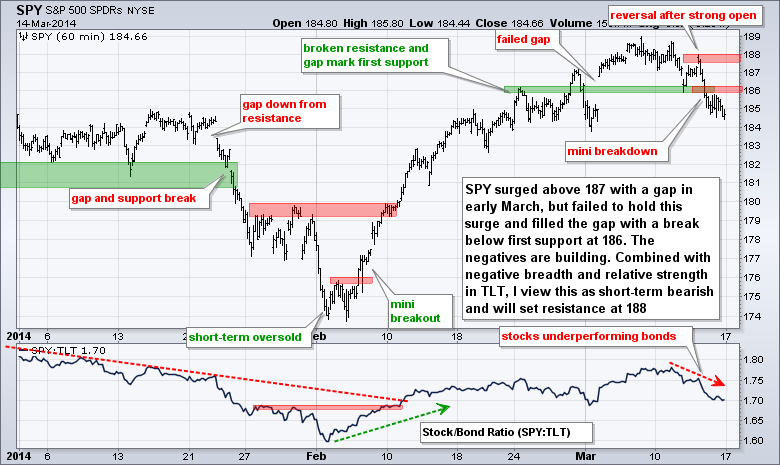

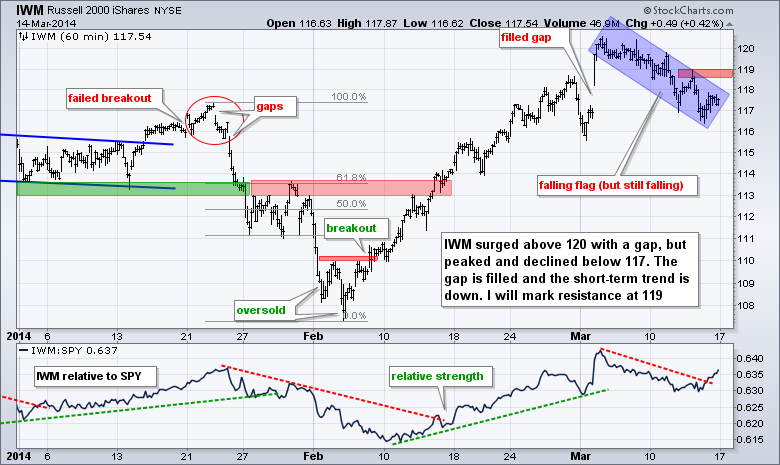
**************************************************************
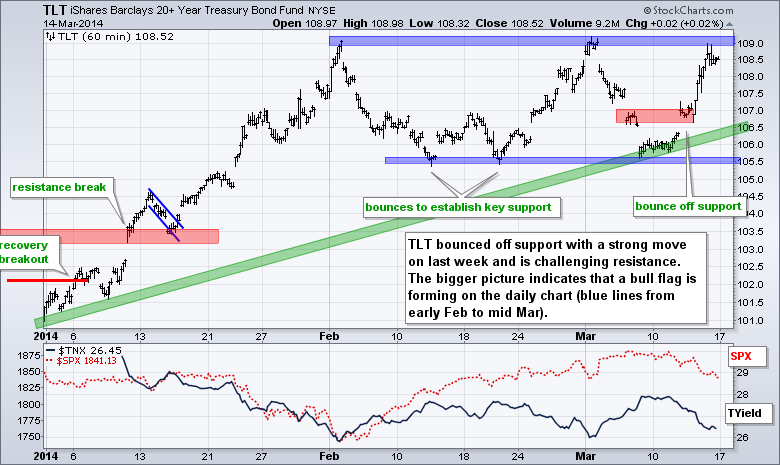
**************************************************************
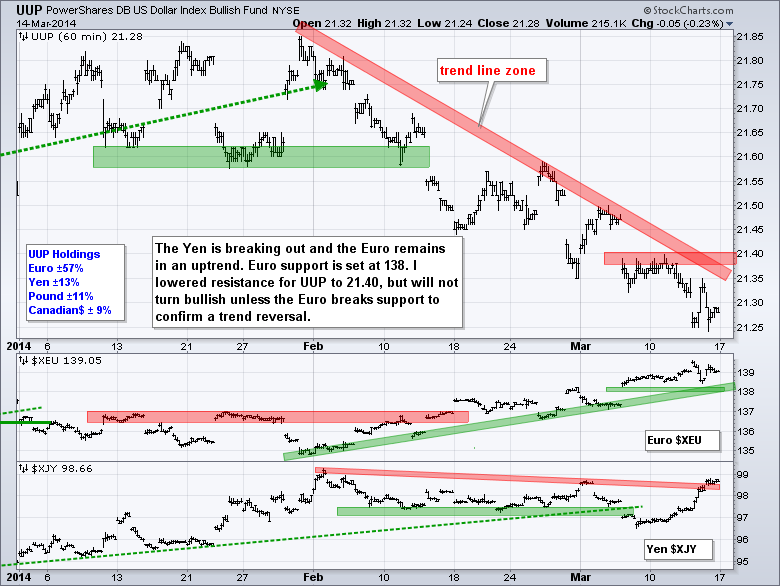
**************************************************************
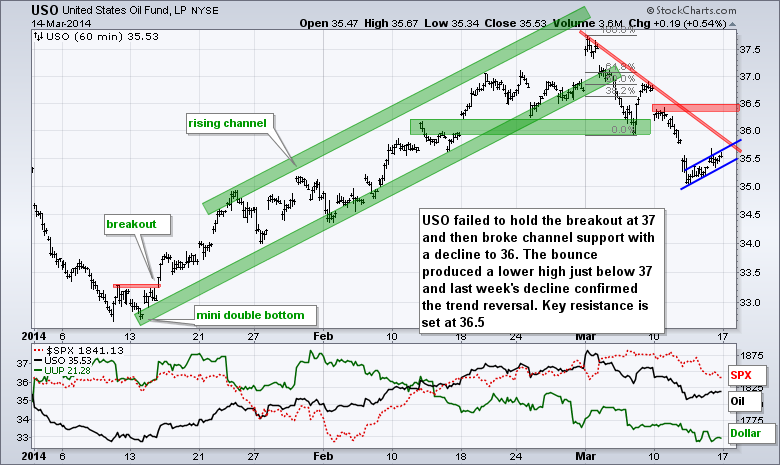
**************************************************************
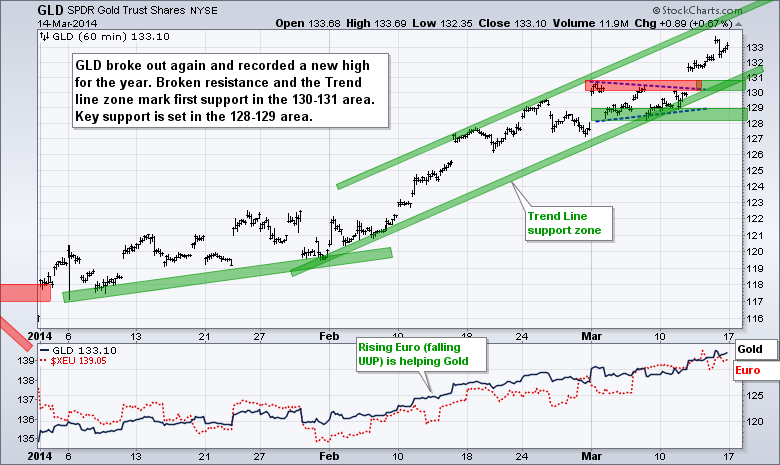
***************************************************************
Key Reports and Events (all times Eastern):
Mon - Mar 17 - 09:15 - Industrial Production
Mon - Mar 17 - 10:00 - NAHB Housing Market Index
Tue - Mar 18 - 08:30 - Housing Starts / Building Permits
Tue - Mar 18 - 08:30 - CPI
Wed - Mar 19 - 07:00 - MBA Mortgage Index
Wed - Mar 19 - 10:30 - Crude Inventories
Wed - Mar 19 - 14:00 - FOMC Rate Decision
Thu - Mar 20 - 08:30 - Initial Claims
Thu - Mar 20 - 08:30 - Continuing Claims
Thu - Mar 20 - 10:00 - Existing Home Sales
Thu - Mar 20 - 10:00 - Philadelphia Fed
Thu - Mar 20 - 10:00 - Leading Indicators
Thu - Mar 20 - 10:30 - Natural Gas Inventories
Fri - Mar 21 - 09:00 - Happy Friday!
This commentary and charts-of-interest are designed to stimulate thinking. This analysis is
not a recommendation to buy, sell, hold or sell short any security (stock ETF or otherwise).
We all need to think for ourselves when it comes to trading our own accounts. First, it is
the only way to really learn. Second, we are the only ones responsible for our decisions.
Think of these charts as food for further analysis. Before making a trade, it is important
to have a plan. Plan the trade and trade the plan. Among other things, this includes setting
a trigger level, a target area and a stop-loss level. It is also important to plan for three
possible price movements: advance, decline or sideways. Have a plan for all three scenarios
BEFORE making the trade. Consider possible holding times. And finally, look at overall market
conditions and sector/industry performance.







